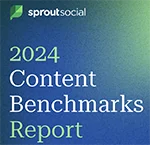|
|
Novartis CEO Joe Jimenez is deeply interested in China’s drug market. Soon, he believes, reforms to the China Food and Drug Administration will lead to the approval of many more drugs that have been tested and approved in other countries. The reforms could help Chinese patients gain access to important medicines.
How did I hear about all of this? By following Jimenez’s Influencer blog on LinkedIn. Like many other healthcare professionals, I’m interested in how Western drug companies are faring in China. Ten years ago, I would’ve had to wait until the New York Times or another publication covered the topic. Thanks to social media, I can learn about it directly from the person at the top.
|
|
The emergence of LinkedIn, Twitter and other social media as platforms for executive commentary is important for at least two reasons. First, the opportunities for companies to garner the coverage they desire in mainstream media are dwindling as media outlets struggle with consolidation and financial challenges. Many top-tier journalists have left the field for higher-paid jobs. The typical media outlet is now making do with a smaller, sometimes less experienced staff.
Reporters must cover more news, under tighter deadlines, and with more competition from bloggers and other non-traditional commentators. Stories are shorter. And headlines are more provocative as media channels, news sites and aggregators compete for readers’ attention. Balanced, nuanced, deeply reported company stories are a rare commodity.
The second reason I’m excited by blogging opportunities on sites such as Linked-In — as well as less-obvious outlets like Glassdoor, Quora and Triberr — is more personal. I work in the biopharmaceutical space, where reputation has taken a heavy hit. According to a January 2017 Harris Poll, only nine percent of U.S. consumers believe pharma and biotech companies put patients over profit. Thus, companies sorely need new approaches to sharing perspective on critical issues that impact business. An executive blog can help explain the company’s positions and tell a more nuanced story to impact stakeholder understanding.
Before the advent of social media, placing a well-crafted OpEd in the Wall Street Journal or Washington Post could fulfill this objective. That’s still true today. But the hurdles are higher, now, and so are the risks. Much as traditional media outlets may strive for civility in their “comments” area, executives who air their opinions are vulnerable. Even where reader feedback is supportive, anonymous comments make it hard to analyze who’s engaging with the content, or how much they influence others.
In contrast, I’m impressed with the transparency and refined rules of the road on professional networking sites like LinkedIn. After reading Joe Jimenez’s China post, I skimmed some profiles among the 340+ individuals who “liked” the column. The visibility is remarkable. LinkedIn’s business-and-jobs focus incentivizes members to interact with others and share information about their work experience and professional networks. This transparency is helpful when you run analytics to track the impact of an executive’s blog. What’s more, many members turn to LinkedIn to build their personal brands, which means they are more likely to maintain a demeanor appropriate to business.
An additional draw is the ability of content creators on LinkedIn to leverage their own networks. Colleagues can share the perspectives of their executives. Circles of influence widen to include external vendors, customers, and opinion leaders.
And that’s just part of the picture. Linked-In provides tools that lets authors fine-tune their outreach to disparate audiences. And the site’s 2014 purchase of SlideShare enables other enhancements, such as turning blog posts into slide shows that highlight just the data and key takeaways. As of January, SlideShare boasted 70 million users and some 159 million monthly page views.
While LinkedIn is the obvious standout in the sphere of online thought leadership, there are many other platforms that promote discourse on serious topics and reward intelligent engagement. On Quora, a sprawling question-and-answer community with about 100 million monthly unique visitors, the stature of registered members rises with the volume and quality of answers they provide.
Professional stature in a technical field enhances credibility on Quora. As long as your executive concentrates on topics where she has indisputable expertise, her stature on the site is likely to rise. Quora provides a variety of opportunities for blogging and live Q&A “sessions.”
In a similar fashion, Triberr helps content creators reach audiences interested in topics that might be as broad as “nursing” or as narrow as a single drug. If nothing else, the site can help corporate thought leaders keep track of what like-minded bloggers are writing.
If a company wishes to engage job candidates, then consider a blog post on the job-search and review site Glassdoor, which attracts about 33 million unique users a month and contains data on 660,000 companies around the world, according to Fast Company.
Whether on LinkedIn or Glassdoor, there are simple do’s and don’ts that will make your article more attractive to your readers, and to editors who may serve as gatekeepers.
Most important, an article is not a message track. Site editors and readers alike are looking for insights and information on developments in the news and trends in the industry. Stories that surprise the reader, defy conventional wisdom, and steer conversations in a new direction garner the most engagement.
Consider presenting a unique analysis on an industry trend, with original data if possible. An unusual personal narrative can also be a platform for a chief executive, especially, in healthcare, if the story involves intimate experience with illness, mortality, or recovery. A high corporate title is also a big draw.
Traditional virtues such as humility and generosity also matter in digital domains. The stakeholders an executive most wants to reach will respond best to arguments presented in a moderate tone with an abundance of persuasive detail.
There are a few examples of executives who do this right. I would point to the last five posts on Joe Jimenez’s blog. Each short article illuminates a topic that’s top of mind in his industry, along with an informative snapshot of Novartis’s activities. Perspectives presented with intelligence and insight are the ones that resonate most.
***
Cynthia Isaac, Ph.D, leads the Corporate Communications practice for the public relations group of inVentiv Health Communications.

 Cynthia Isaac
Cynthia Isaac

 What if companies could harness the fury of online outrage into a force for good? This is precisely where companies can start turning the trolls into brand champions.
What if companies could harness the fury of online outrage into a force for good? This is precisely where companies can start turning the trolls into brand champions. Audiences interacted with brand content far more often on Facebook and Instagram in 2023 than they did via X (formerly Twitter), according to a report that tracked engagement trends across different social networks.
Audiences interacted with brand content far more often on Facebook and Instagram in 2023 than they did via X (formerly Twitter), according to a report that tracked engagement trends across different social networks. Can public relations help counteract the dissension fostered by the power of digital platforms to spread hate, fear and confusion?
Can public relations help counteract the dissension fostered by the power of digital platforms to spread hate, fear and confusion? The number of Americans who get their news from TikTok has quadrupled in the last three years, according to a recent Pew Research Center report.
The number of Americans who get their news from TikTok has quadrupled in the last three years, according to a recent Pew Research Center report.


 Have a comment? Send it to
Have a comment? Send it to 
No comments have been submitted for this story yet.